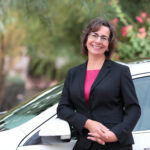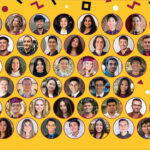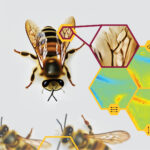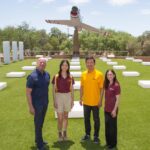
ASU students shine at construction competitions
Posted: March 22, 2011

The team of ASU students (left to right) Alexandra Taylor, Scott Carfi, Rebecca Freitas, Josh Mischung and Ian Kennedy took a first-place prize in a regional student construction management competition organized by the Associated Schools of Construction.
Arizona State University teams placed at or near the top in recent national and regional competitions testing students’ skills in construction project management.
Three student teams finished in the top 10 in a national construction project competition sponsored by the American Concrete Institute and the America Society of Concrete Contractors.
Two other teams took first and third places in regional competitions near Reno, Nev., organized by the Associated Schools of Construction.
Most team members are students in the Del E. Webb School of Construction in the School of Sustainable Engineering and the Built Environment, one of ASU’s Ira A. Fulton Schools of Engineering.
Close to 50 teams from 16 universities throughout the United States entered the national concrete construction competition.
Students presented to a panel of experts their solutions to a concrete paving and construction problem involving rehabilitation of the Dames Point Bridge, a cable-stayed bridge over the St. Johns River in Jacksonville, Fla.
The competition problem simulated a potential difficulty that builders and managers could face in a real bridge construction project of this kind.
Teams were judged based on how clearly and concisely they presented their proposed solution, the technical quality of the solution and its economic feasibility.
The three ASU teams competing won third-place, sixth-place and 10th-place awards.
“The fact that all of our teams placed in the top 10 is a great accomplishment that reflects well on the students in our Construction Industry Management program,” says Jim Rogers.
Rogers is a faculty associate in the Del E. Webb School of Construction and director of the American Concrete Institute’s Arizona chapter.
The three teams consisted of students in the upper-level course Rogers teaches that focuses on operations and management of concrete production facilities.
The course covers the business, production and supply chain management aspects of the business, as well as the environmental and sustainability aspects.
The competition tests student’s knowledge in those areas, as well as what they’ve learned in courses on concrete technology, concrete testing and troubleshooting, says Rogers, who was the adviser to the student teams.
The third-place team has been invited to the American Concrete Institute national convention in Tampa, Fla., in April to present their concrete construction problem solution to the institute’s Construction Liaison Committee and be recognized for their achievement.
The team consists of students Alexander Bertheau, Morgan Spears Ashley Bagley and Patrick Tarkowski.
In the Associated Schools of Construction competition, ASU sent about 50 students as part of eight teams to compete against teams from most universities and colleges in the West Coast and Southwest – plus a few in the East and Midwest – that have construction management programs.
One ASU team took first place in the Determining Project Risk competition. That contest challenged students to assess the risks for the construction of a large medical and research building in San Francisco. Students had to show how they would manage costs and work schedules, negotiate subcontractor services and work out site logistics.
An ASU team took third place in the Design-Build category. Students had to devise viable plans for a 1,100-stall parking structure that could be integrated into an adjacent casino/amphitheater complex in Tucson. The project had to be cost-estimated, designed and built within roughly one year.
Teams were judged by representatives of companies who worked on these actual projects.
The Project Risk team consisted of Ian Kennedy,Joshua Mischung, Alexandra Taylor Rebecca Freitas and Scott Carfi.
The Design-Build team consisted of Bret Burnham, Skyler Holloway, Jassica Haycock, Richard Stradling, William Dietz, Brittany Hoste and alternate Jared Stradling.
Besides showcasing their skills, students met with industry recruiters. Many companies in construction and related businesses sponsor the competitions. ASU’s teams are supported in part by more than 20 local construction companies, some of whose employees volunteer time to mentor student teams.
Project Risk team member Freitas says the most valuable things students learn from the competitions are intangible skills, such as how to work with peers and network with professionals in the industry.
“Even students whose teams don’t go home with awards end up winning,” she says. “They get opportunities to make contacts that other students don’t, and those contacts will often make it easier for them to find a job after graduation.”
Aaron Cohen, Kraig Knutson and Edwin Weaver, lecturers in the Del E. Webb School of Construction, coached student teams involved in the competitions in Nevada.
“I was proud to be there with our students,” Cohen says. “All of our teams put forth an exceptional effort and represented ASU with class and professionalism.”


































